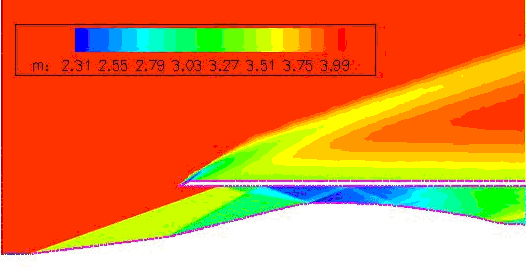Faculty:
Dr. Ziaul Huque
Tel: 936-261-9957
Email: zihuque@pvamu.edu
Objectives:
The Computational Fluid Dynamics (CFD) Institute was established on February 16, 1996 at the Roy G. Perry College of Engineering at Prairie View A&M University (PVAMU) in partnership with Rocketdyne Division of Pratt & Whitney. The purpose of the Institute was to conduct applied research and development in a key engineering discipline and to provide a mechanism for the development of an advanced degree program with concentration on CFD. One of the major objectives of the Institute is to involve students in research and expose them to current problems in this important engineering area.
Research Activities:
The Institute is currently involved in the large scale computation-facilitated design optimization for propulsion components. Design optimization problems based on empirical formulations and experiments in the past are now being addressed with the aid of large scale CFD based on first principles. The large scale computation is costly and we can’t afford to generate as many data points as we otherwise would desire to support the optimization process. This is especially true when the number of design variables increases. The challenges include physical modeling uncertainty, geometric complexities, non-uniform and non-orthogonal meshing, disparate length scales and characteristics of the flow variables (such as velocity and pressure), and acceptable run time for engineering analysis and design. To be able to carry out an effective large scale computation-based design optimization, it is essential that the uncertainty and appropriate confidence limits of the computed solutions be quantified over the chosen design space. To help realize that large scale computing can truly facilitate design optimization and decision making process, it is important to ensure that the computational results can be reused in different steps of the process. Such goals call for the construction of a global representation of the design space characteristics, and offer various techniques and concepts to help us gain better knowledge to do optimization, sensitivity evaluation, trade-off comparison, and final decision.
Fig.1 Mach No. distribution contour of an RBCC engine
Fig.2 Mach No. distribution contour of a supersonic inlet
Research Facilities:
Current computing facilities include a newly built 30 node parallel cluster. Each node has 2Gb Memory, 3 GHz speed and 160 Gb hard drive. The server has 4 processors with 1 Gb Memory, 2.33 GHz speed and 250 Gb hard drive for each processor. Apart from the parallel cluster there are also several PC’s and state of the art printers.


